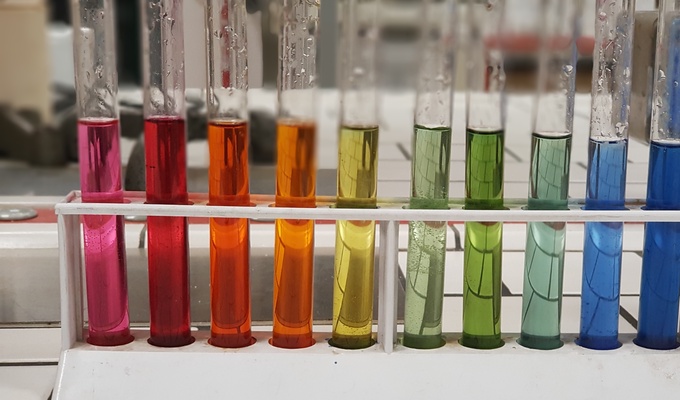In chemistry, pH, historically denoting "potential of hydrogen", is a scale used to specify the acidity or basicity of an aqueous solution. Acidic solutions are measured to have lower pH values than basic or alkaline solutions.
The pH scale is logarithmic and inversely indicates the concentration of hydrogen ions in the solution.
where M = mol dm−3. At 25 °C (77°F), solutions with a pH less than 7 are acidic, and solutions with a pH greater than 7 are basic. Solutions with a pH of 7 at this temperature are neutral (i.e. have the same concentration of H+ ions as OH− ions, e.g. pure water). The neutral value of the pH depends on the temperature – being lower than 7 if the temperature increases above 25 °C. The pH value can be less than 0 for very concentrated strong acids, or greater than 14 for very concentrated strong bases.
The pH scale is traceable to a set of standard solutions whose pH is established by international agreement. Primary pH standard values are determined using a concentration cell with transference, by measuring the potential difference between a hydrogen electrode and a standard electrode such as the silver chloride electrode. The pH of aqueous solutions can be measured with a glass electrode and a pH meter, or a color-changing indicator. Measurements of pH are important in chemistry, agronomy, medicine, water treatment, and many other applications.
